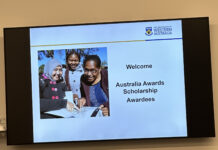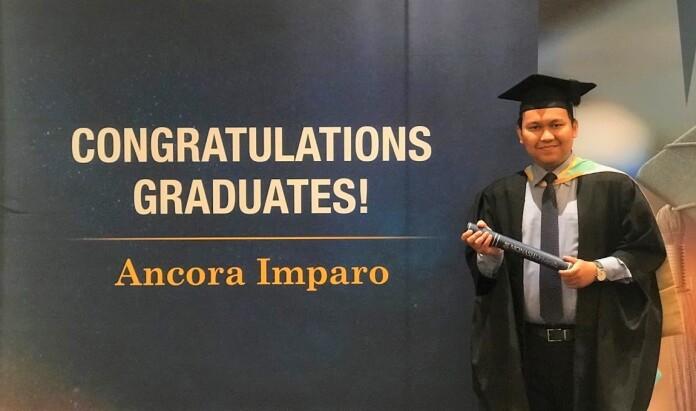Some people might think that building a research profile is only necessary for a doctoral degree/PhD student. However, familiarising ourselves with research and publication can be started during our Master’s degree. In this article, Yogi Saputra Mahmud (a Master of TESOL graduate from Monash University, Australia) shared his experience in becoming acquainted with research dissemination during his Master’s degree.
***
Before I pursued a higher degree at Monash University, Australia, I never thought that it’s essential for Master’s degree students to start familiarising themselves with the culture of research and publication. Further, when I applied for Indonesia Endowment Fund for Education or LPDP Scholarship, I was more aware of the importance of building a research profile even as a Master’s degree student since the scholarship required its candidates to have some strategic plans in terms of research during their study in either Master or Doctoral degree.

At that time, I started crafting my study plan for the scholarship registration. In the study plan, I wrote that I intended to take a Coursework plus mini-thesis pathway at Monash University, Australia. Actually, there are two possible pathways that Master of Education/TESOL students can take, including full coursework and coursework + mini-thesis component. I took the mini-thesis pathway because I wanted to compare the thesis writing and guidance system in Australia and Indonesia. Furthermore, I was also interested in exploring the experience of early English language teachers in Indonesia.
As I continued my study at Monash University, I became more aware of research and publication culture, especially after discussing with my lecturers, colleagues, and senior students studying for doctoral degrees. Therefore, I would like to share several strategies to familiarise ourselves with research and publication culture based on my personal experience.
Start with Our Coursework Assignments
The assignments during my journey at Master of TESOL degree at Monash University were dominated by essay-based assignments. Regarding this, I was required to critically analyse a particular issue in education in around 4000-5000 words. Even though most of the assignments do not oblige the students to conduct a direct research experiment or field research, the assignments still have some research components. In this case, the students involved in literature review research to strategically discuss a certain phenomenon in education. In addition, some assignments also demand the students to arrange a classroom presentation prior to the essay submission to clarify the important points in the essay and improve it generally.

These activities are highly related to research and publication culture that eventually make me more confident to start disseminating the research to the public by converting my coursework assignments into journal articles. Yes, it is possible to convert our coursework assignments into journal articles since some journal publishers accept conceptual papers – an article that is not based on primary research to be published on their platforms. You can find the list of internationally-indexed journals in Scimago Journal Ranking for Scopus and Clarivate for Thomson Reuters. Alternatively, you can begin your research publication journey in nationally-indexed journals that can be explored in the SINTA database.
I personally started my research publication endeavour by submitting my coursework assignments in the first and second semester to two nationally-indexed journal publishers in Indonesia, namely Journal of English Studies and Premise Journal of English Education. Generally, it took around four to five months from the submission to publication phase. However, different journal publishers may have different timeframes that you can normally identify in their Open Journal System (OJS).
Discover Opportunities for Paper/Poster Presentation
Besides converting my coursework assignments into journal articles and directly submitting the articles to journal publishers, I also actively looked for opportunities to present my assignments in paper or poster presentation conferences orally. In this case, it is a golden opportunity for us not only to improve our presentation skills but also to connect with people who have similar research interests with us. This kind of activity may eventually help us in engaging with our future employers or business partners.

Based on my experience, I managed to participate in three different conferences that are related to Education and TESOL field during my Master’s degree, namely International Graduate Student Symposium 2019 in Hanoi, Asia TEFL 2019 in Bangkok, and Conference on Applied Linguistics 2019 in Bandung. In general, the conference committee will ask the prospective participants to submit a 200-word abstract first to be assessed for its relevance to the conference. After receiving a notification of acceptance from the committee, we can either submit for conference proceedings (usually around 3000-4000 words) or simply present the presentation (without submitting our article for conference proceeding publication).
Explore for Funding Opportunities
Some journal publishers require authors to pay the article submission fee. Furthermore, when we want to participate in an academic conference to present our paper or poster, it also costs us money for registration, flight, and accommodation expenses. Therefore, it is essential to identify funding opportunities offered by the university and your scholarship provider. Additionally, several conferences provide a fee waiver for some authors with outstanding papers.

In my experience, I was very lucky to receive funding opportunities from Monash University and the LPDP Scholarship for research publication. Regarding this, Master’s degree students at Monash University will be able to apply for a one-time funding scheme for the conference registration fee up to AUD300. Therefore, it is highly recommended that you consult with your academic advisor during your Master’s degree regarding the relevant funding scheme for research dissemination. You will be amazed by the abundant opportunities that your university can offer.
Meanwhile, LPDP Scholarship will be able to assist most of our conference costs, including flight, hotel, and publication fees, as long as the conference is indexed by Scopus or Thomson Reuters. I advise you to check the latest scholarship regulation regarding this matter. In general, however, different scholarship providers may have different funding schemes that you can follow, which can become your primary consideration when thinking about applying to a certain scholarship program for your Master’s degree. In addition, some scholarship providers, such as LPDP, also provide financial assistance for students who take final research components in their Master’s degree that will be explored further below.
Mini Thesis Component
As I have explained earlier, I took this pathway due to my curiousity in comparing the thesis writing system in Indonesia and Australia. Additionally, I was really passionate about examining beginning English teachers’ experience in developing their professional identity. Personally, I was totally satisfied with my decision to take this pathway as it could broaden my perspectives in research and academic writing.
The guidance system in thesis writing is also significantly different from that in Indonesia. Monash University lecturers emphasized necessary stimulation to activate our self-regulated skills in completing the thesis. Non-academic obstacles, such as arranging a guidance schedule, were never experienced by myself since the lecturers offered more flexible modes of guidance either through synchronous or asynchronous schemes.

The mini-thesis was my ultimate opportunity to build my research profile during my Master’s degree at Monash University since I was able to compose an 11,000-word research document that involved primary research components. Regarding this, you can also extend your mini-thesis by disseminating it in the form of a paper/poster presentation, a journal article, or a book chapter.
In addition, mini-thesis is considerably essential for those planning to have a career that highly emphasizes research, such as lecturers, consultants, etc. Personally, I was also asked to thoroughly explain my thesis by my employer when I applied for a lecturer’s position at a private university in Indonesia. From that experience, I believe that building our research reputation can significantly make us different from other candidates.
Based on the above explanation, I highly recommend taking this pathway, especially since many scholarship providers offer students financial assistance to complete their mini-thesis. In my personal experience, I also received funding assistance from LPDP to cover relevant expenses, such as flight tickets, proofreading, printing, and other related fees. Note that some scholarship providers may have different funding schemes for the mini-thesis component.
Further Steps
Ultimately, you can keep building your research publication profile by improving the searchability of yourself and your research by:
- Creating a Google Scholar profile to improve the searchability of your works so that other people can read and cite your research;
- Setting up an ORCiD iD account, which becomes an essential requirement for some journal publishers;
- Uploading your articles in researchgate.net to reach out to the broader public;
- Updating your LinkedIn profile, mainly the research and publication section.









